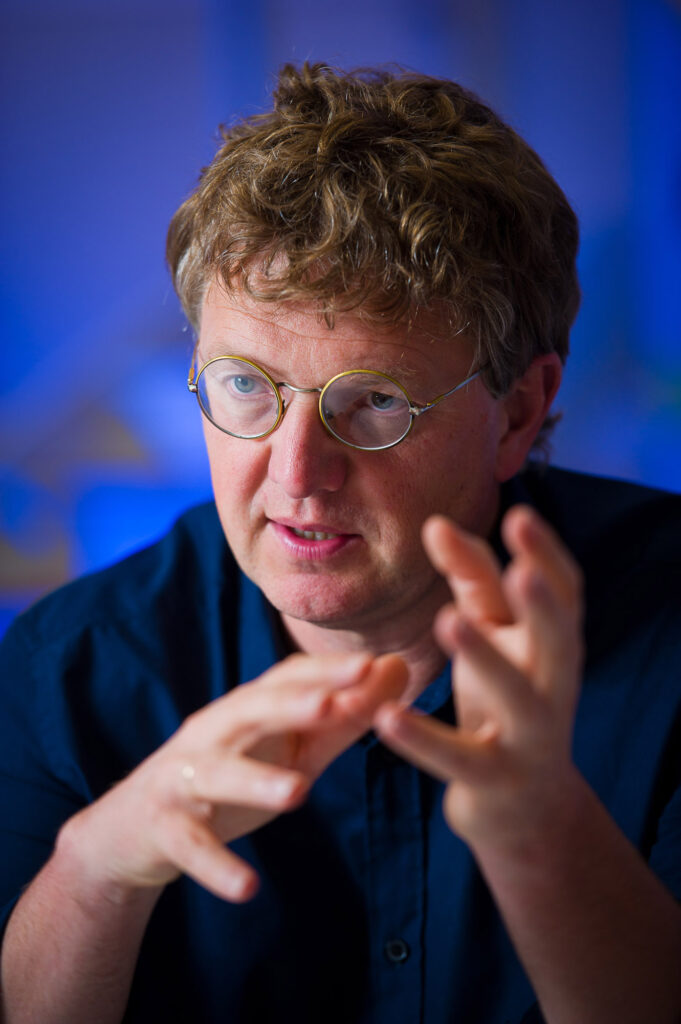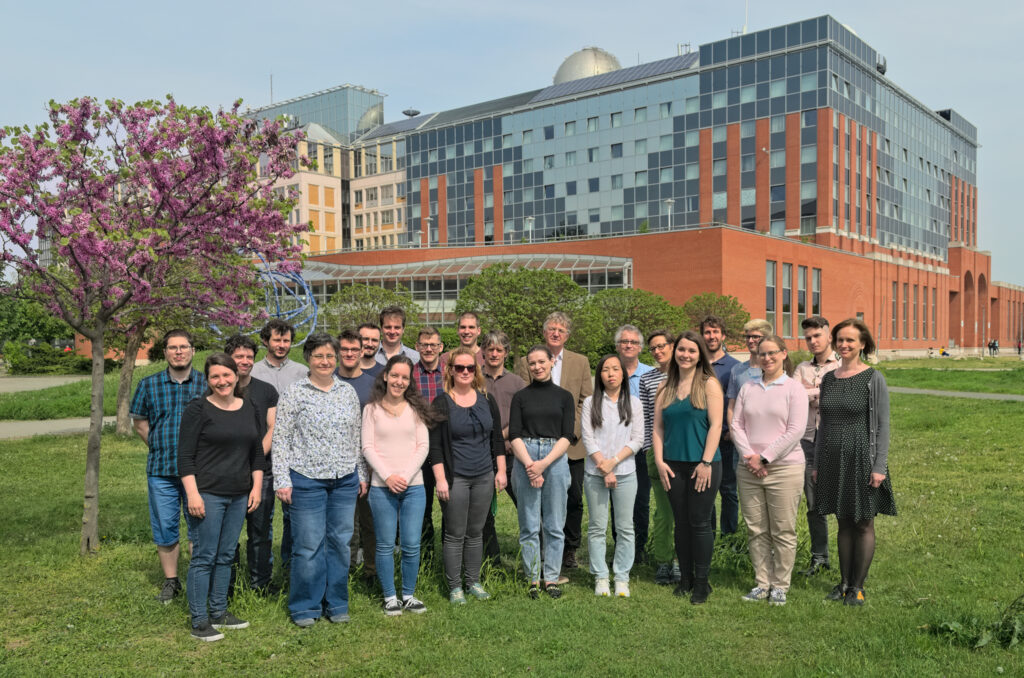András Perczel
- ELTE university professor,
the MTA, Szt. István Tud.Akad. and member of the Academia Europaea

Támogatás összege
Ft
Brief description of the research
The physiological function of living organisms is facilitated (among other factors) by the finely regulated and coordinated interaction of individual elements of protein networks, where individual protein molecules assemble into multimers and complexes and undergo conformational-dynamics and other changes. Our aim is to better understand such processes and to explore the characteristics that determine their physiological or pathological functions. Some of our specific scientific questions are: Which are the key atomic level interactions during protein action, complex formation and self-association? How protein function related to the key structural motifs of their folded structure and internal dynamics? Which reaction routes can be realized in enzymatic actions? How are these routes affected by specific mutations? Which physico-chemical properties of amide bonds determine the stability of proteins?
Letöltések

For our investigations we use high-resolution (NMR, X-ray diffraction, cryo-EM) and low-resolution ECD, FTIR, VCD) experimental methods and additional imaging (AFM) techniques for structural characterization of molecular systems; furthermore, we use applied quantum chemistry, molecular modelling and bioinformatics. We have also carried out methodological developments related to our research, e.g. effective expression of proteins in fusion systems, improved methods for flow peptide synthesis [1,2]. We also developed a method for the analysis of chiroptical spectra (CCA+), a metric for the comparative analysis of protein structures (LoCoHD) [3], and a new algorithm for NMR-based structure determination ligand-bound proteins [4].
Our research focuses on areas of therapeutic interest, such as a deeper understanding of the molecular basis of amyloid formation, an important form of protein self-association. In this process conformational changes of proteins results in fibrillar deposits of protein aggregates consisting of β-sheet structural elements formed by many protein chains. Irreversible amyloid formation occurs, for example, in some neurodegenerative diseases (Alzheimer’s disease, Parkinson’s disease), but there are also physiological processes in which amyloid formation is not only functional but also reversible! These include the storage and release of certain hormones (e.g. glucagon) involved in the regulation of blood glucose levels. The aims of our studies are to characterize the environmental and amino acid sequence-specific conditions of reversible and irreversible amyloid formation; as well as to unravel the folding and unfolding pathways leading to amyloids and the morphology of the resulting aggregates. We also aim to explore the interaction patterns of the short oligopeptides that form the core of amyloids that the stabilize the forming nanostructures and their polymorphs [5,6].
An additional biologically important function of self-assembly is the formation of protein multimers, which fcilitates structure-stabilization, shielding or using amyloid-prone characteristics of some protein segments, also fine-tuning of protein action by allostery and co-operation between individual subunits. The functional unit of the transport protein transthyretin is a homotetramer, which can dissociate resulting in rapid unfolding of the monomers and their aggregation to an amyloid form. Its importance in disease and therapy is suggested by the fact that it is associated with the second most common type of systemic amyloidosis. Our studies focus on its structure and stability and role of its natural variants in the extent of its amylogenicity.
The acylaminoacyl peptidase enzyme
The acyl aminoacyl peptidase (AAP) enzyme, a potential target for cancer therapy modulating both the ubiquitin/proteasome system and the localization and function of oncogenic kRas mutants. Our structural studies shed light to that its substrate size-selectivity is facilitated by the combination of its flexible gatekeeper loops and the channel system created by the tetrameric assembly for the substrate route. It is the subject of drug-drug interactions between the antipsychotic drug valproate and the carbapenem family of antibiotics. We have elucidated the molecular basis of this interaction and the mechanism of antibiotic binding and inhibition using cryo-electron microscopy [7]. Our results provide insight into the molecular mechanisms by which antibiotics can cause (previously unknown) side effects.
Ras proteins are molecular switches cell growth regulation. Their therapeutic relevance is due to the fact that key point mutations of kRAS and hRas are found in most cancers. Their mutant variants (e.g. G12V, G12D, G12C), unable to bind to the negative regulatory GAP protein, cause excessive amplification of the signaling pathway, leading to uncontrolled cell division and thus tumor formation. We have developed a new protocol for the comparative study of the inactive (GDP-bound) and activated (GTP-bound) forms of kRas and its oncogenic mutants, and we have elucidated which part of the protein is affected by the structural-dynamic difference caused by the mutated amino acid and how this affects the catalytic mechanism [4,8]. We are also involved in the development Ras-targeted compounds (PharmaLab).
The production of peptides and proteins is a challenging and costly process for research and the pharmaceutical industry also having high environmental impact. Our improved flow chemistry-based method can produce peptides and small proteins quickly and efficiently, reducing the cost of synthesis by up to an order of magnitude, making the production of bioactive peptides and protein fragments much more economical [1,2]. We have successfully replaced routinely used toxic solvents (e.g. dimethyl formamide) with sustainable alternatives, making a major part of the chemical waste recyclable.
Research results
Our results may contribute to developing new strategies in therapy of cancer, diabetes and virus infections, as well as to a better understanding of intermolecular interactions and (supra)molecular patterns of proteins.
[1] V. Farkas et al. Organic Process Research & Development (2021) 25:1 82
[2] K. Ferentzi, et al. Reaction Chemistry & Engineering (2024) 9: 58
[3] Zs. Fazekas, et al. Nature Communications (2024) 15: 4029
[4] M. Gadanecz et al. Int J Mol Sci (2023) 24: 12101
[5] N. Taricska et al. Chemistry – A European Journal (2020) 26: 1968
[6] D. Horváth et al. Nature Communications (2023) 14: 4621
[7] A. J. Kiss-Szemán et al. Chemical Science (2022) 13: 14264
[8] D.K. Menyhárd et al. Chemical Science (2020) 11, 9272




